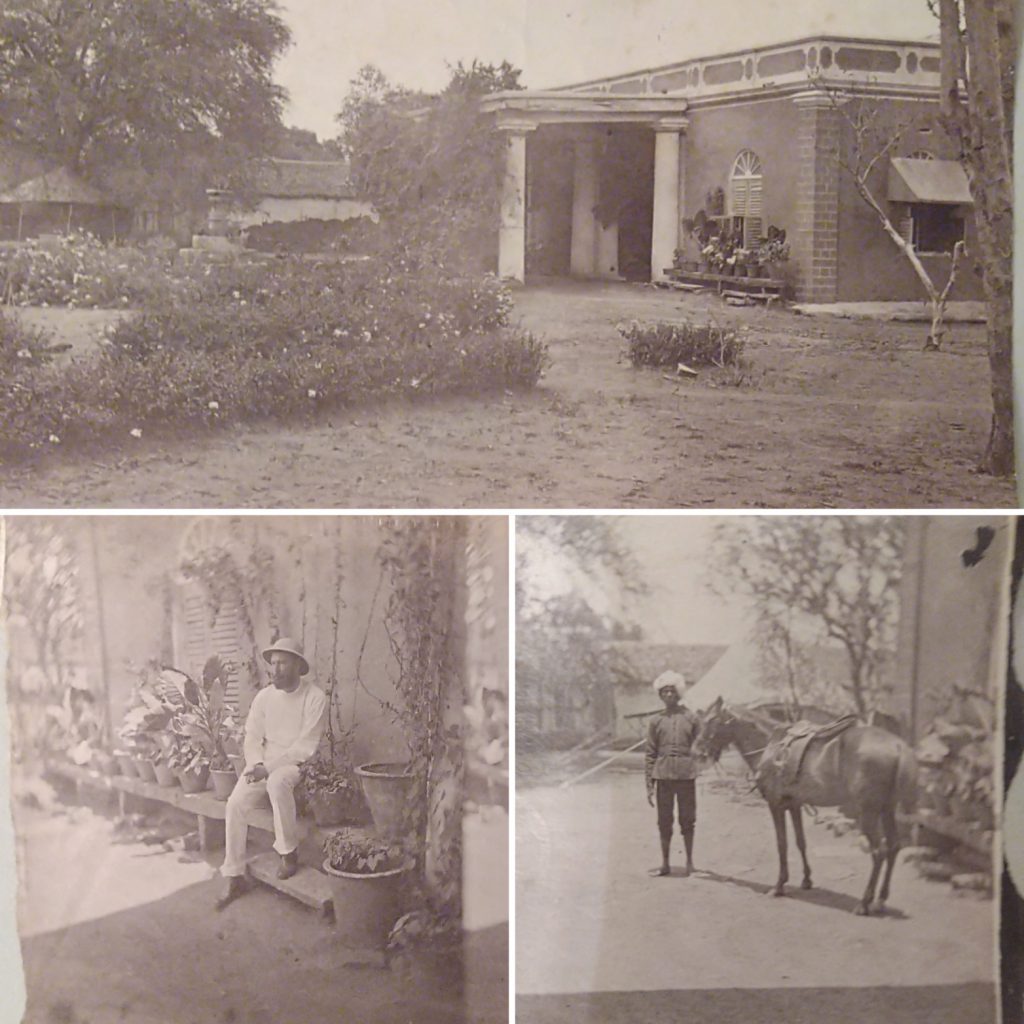Collecting Birds: Robert George WR
Robert George was born on 25 January 1852 in their Queens Street home, Edinburgh. He was baptised at Whitehill by Dean Ramsay.
The Whitehill art collection was auctioned in 1855, a sad occasion at which Sir Robert Dundas was present. The family moved to Boulogne where they lived for a few years. The children went to see the Exhibition in Paris and visited the soldiers camping at Boulogne, on their way to the Crimean War. They moved to Paris in 1856 and lived at Rue de Beri for two years. It was there that Dubacly was commissioned to paint the large portrait of Robert and his sisters Bessie (standing) and Flora, who died aged 12.
They returned to Whitehill in 1857, with Bennet, their old Northumbrian nurse, two French servants, and two Norman carthorses called Nap and Bony who went to live at Thornton Home Farm.
Robert George was tutored by Mr Brown, the schoolmaster at Carrington. The family visited their grandfather at Yester on many occasions, and their aunt Lady Jane Hay took photos of Whitehill. However, the family soon moved out again to live at Burntisland, where they were tenants of Mis Abercromby at Dundonald.
In 1860, Robert George was sent at the age of eight to Rodington Rectory in Shrewsbury to be tutored, and spent four unhappy years there. in 1861, his father took a house in Brighton, in Lewes Crescent, but they were back in London the following year, in 12 Cleveland Gardens, which belonged to the Learmonths. In 1863, the family spent the summer holidays in Swanage, and that was where Annie died aged 18. Their Wellesly cousins were also at Swanage. Further moves followed, but Robert George started at Harrow in September 1866, where Mr Farrar was his tutor. The family bought 22 Queen Gate Gardens in 1866, and Robert George lived there while cramming at Kensington Square. The next couple of years were spent in Hesketh Crescent, Torquay.
In 1869, sister Susie married Reverend Frederick Leslie-Melville, and Robert George passed the army exam the following year. In November 1870 he travelled to Karlsruhe to learn German; he also noted the progress of the Franco-Prussian war. The matter of a commission was problematic, given his father’s constant pecuniary problems.
Robert George went to Yester to consult with his uncle Arthur Hay, 9th Marquess of Tweeddale. Sympathetic to the teenager’s predicament, he bought him a commission in the South Hampshire Regiment in 1871. The regiment set sail for India, and thus began a lifelong collaboration with his uncle, Lord Walden, which finally resulted in the publication of Arthur’s great Ornithological Works, which Robert edited. Once in India, Robert started sending specimens of birds to Yester for his uncle to record and classify. He went on to serve in the Afghan Campaign, Burma and the Andurman Islands; his passion for collecting even saved his life. He was exploring hill country in a search for specimens (he was a crack shot and had a rifle concealed as a walking stick) when the Indian Mutiny broke out. Although his own Guide to the Birds of Europe and North Africa was published posthumously, he had been contributing to ornithological literature since 1874, when his first paper ‘Description of a New Species of Woodpecker (Gecinus erythropygius) from British Burma’, was published in the Proceedings of the Zoological Society. He later joined the Highland Light Infantry, becoming commander of the 7th Volunteer Battalion of the Royal Scots. He retired from the Army in 1882, shortly after the death of his father, and took to working in the County of Midlothian, where he served as Deputy Lieutenant.

Before then, on 21st June 1877, a grand dinner was held at Whitehill for all the tenantry to celebrate Robert George’s coming of age (he having been abroad at the time). The house was opened briefly for the occasion, which was followed by the marriage of his sister Mabel to Robert Fergusson. For his part, Robert George spent most of his time at Yester, visiting his Uncle Arthur.
Illness:
At the end of the War, Robert George arrived in London on 12 August 1879 and went to Whitehill, where he found his mother playing billiards with Alice. He was laid up for three months in the Hay Loft – presumably inside the stable yard.
On January 1st, he went down with typhoid fever and lay in 13 Grosvenor Crescent, Edinburgh while his new regiment, the 74th Highlanders, was mustering in Maryhill Barracks. He passed the time dictating a memoir of his short life, which has been preserved. In February 1882, he exchanged this post and became Adjutant for the Volunteers of the 2nd Midlothian Regiment. He lived at Whitehill, while his father and family stayed in Edinburgh at no 8 Melville Crescent. Robert Wardlaw died in June 1883.
That year, Robert George completed his 12 years of service. He married Mary Alice Irene Hogg, a daughter of Charles Swinton Hogg, Administrator-General of Bengal, on 17 February 1885. The family hung onto Whitehill for a few years while actually living in London, and Cirencester. The house was then let to W. Wieland, Secretary of the North British Railway in 1887. For their part, Robert George and his family moved to Craigby, in Birnam, Perthshire, and then to Dalhousie Grange in Bonyrigg. In 1891 they wintered in Torquay, but were back in Tillicoultry by 1892
Robert George actively corresponded with other ornithologists in the region and many of his notes were published by Allan Octavian Hume in Stray Feathers.
Isis published an obituary following his death in 1918..http://onlinelibrary.wiley.com/doi/10.1111/j.1474-919X.1921.tb01287.x/epdf
